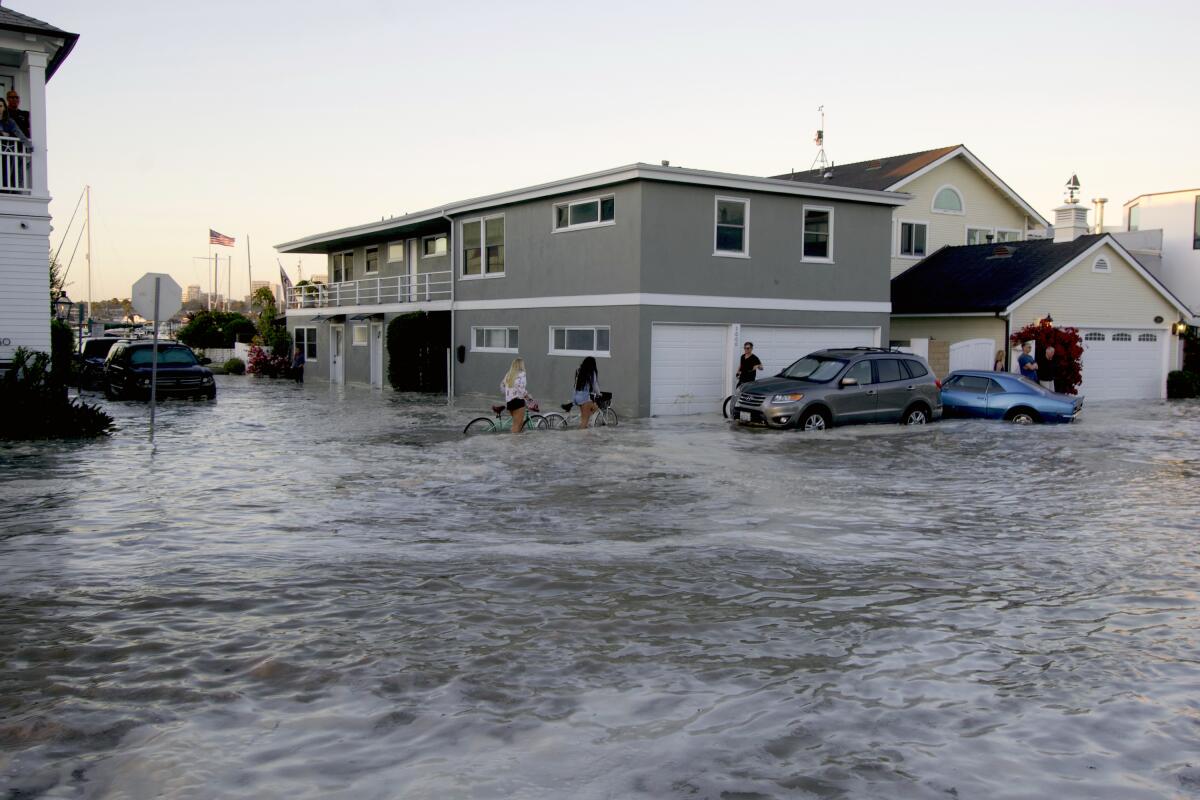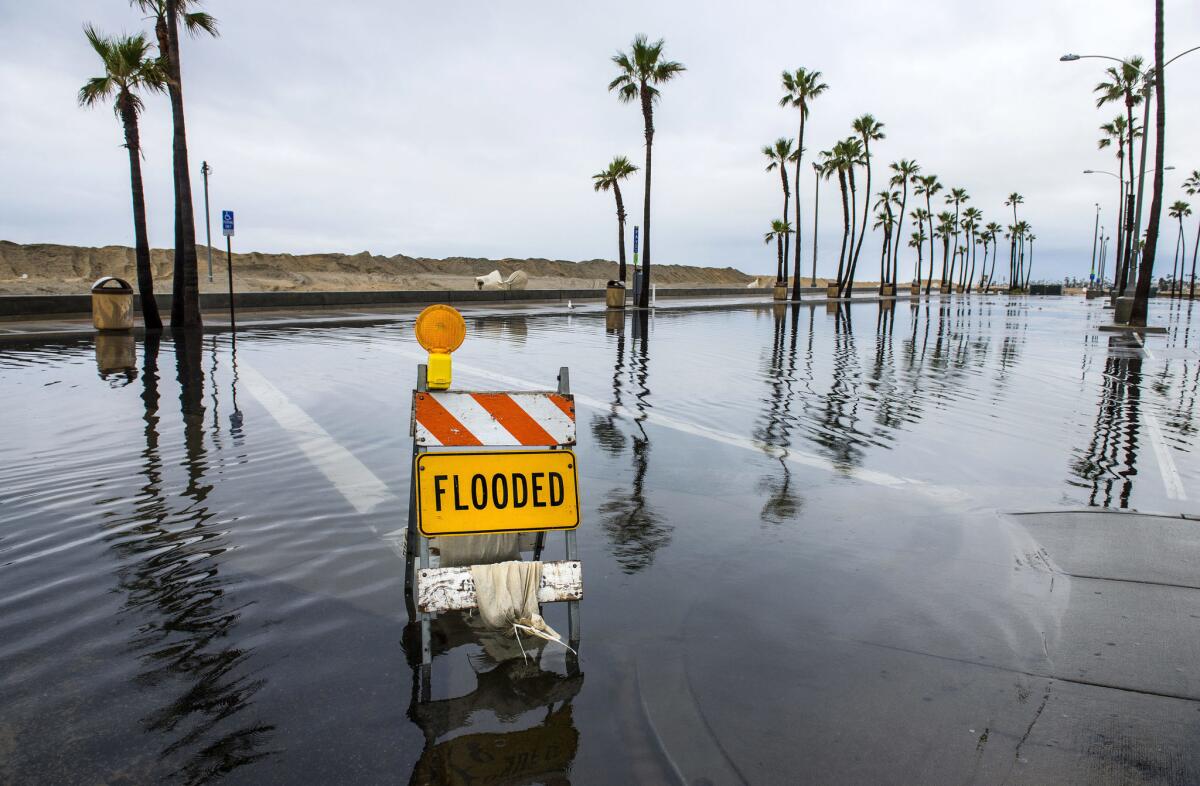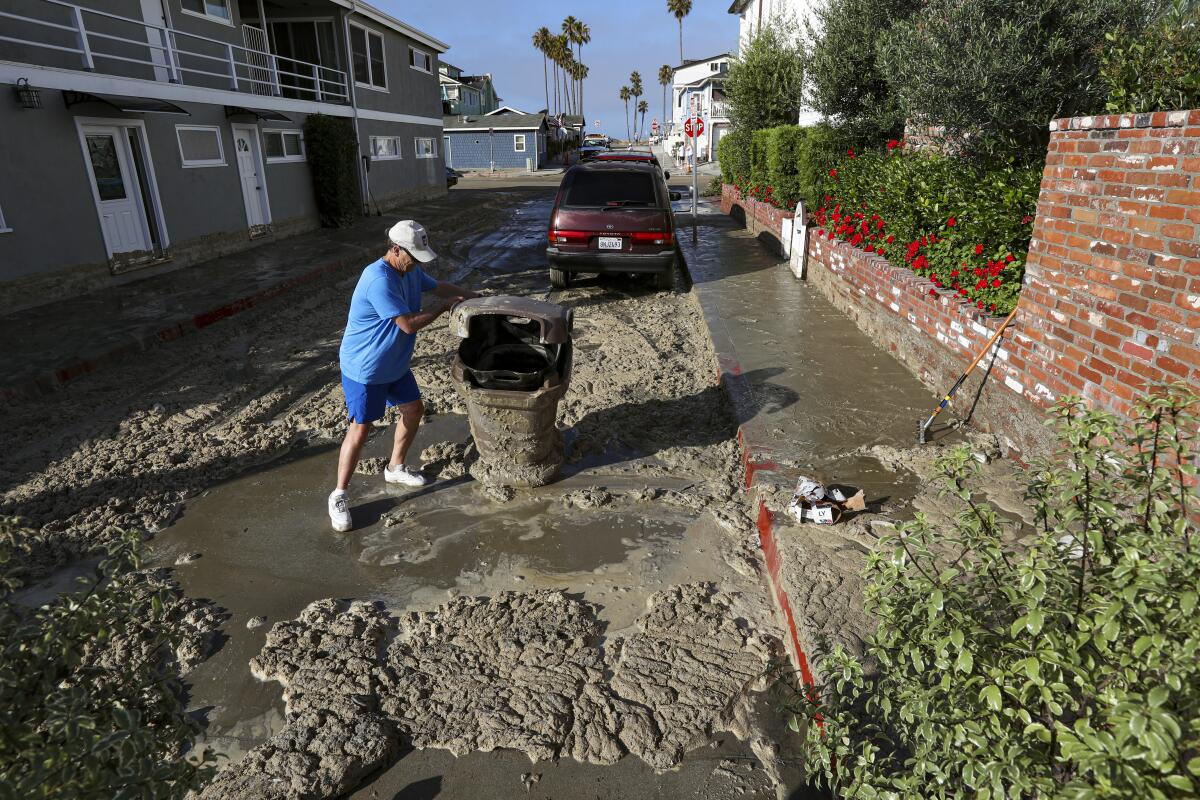Major drainage improvements for Balboa Island inch forward

- Share via
When it rains, it pours in Balboa Island — most notably into its streets, where flooding can occur.
On Tuesday, the City Council received a presentation of the concept plans to modernize Balboa Island’s drainage infrastructure, which currently relies on the usage of manually operated tide gates to manage rainfall and the high tides that wash onto the island. City staff said there are currently about 25 drain lines.
Assistant city engineer Bob Stein said the trouble lies in the fact that the high tides from Newport Bay are often higher than the surrounding bay-front or street elevation. On average, streets on the westernmost end of the island are about 5 feet. That compares against high tides typically between 4.5 to 7 feet.
King tides can also reach heights of 8 feet.
There’s also the issue of shutting the tide gates to control the flow of high tides when it’s raining, which traps the water in the streets.
Balboa Island flooded in December 2018 during a heavy rainstorm. The streets flooded again in 2019 during a Thanksgiving storm, and high tides flooded the streets last July.

Stein said Balboa Island experiences high tides almost every day. City staff estimates about 1,600 labor hours are spent annually for utility staff to open or close the valves. During a wet year, city utility crews spend about 800 to 900 hours just pumping water off of Balboa Island when it floods.
The proposal would replace the manual tide gate system with an automated pump station with new storm drains that will flow to the pump station. This would save on labor and reduce flooding events on Balboa Island, according to city staff, and low-flow urban runoff collected could be diverted to the sanitary sewer instead of being expelled into Newport Bay as it currently is.
City staff considered several locations for the automated pump station, including on the northern and southernmost points of the island. It was initially proposed to be placed on Balboa Avenue, adjacent to the grand canal. It is now recommended to place it on the western end of Park Avenue.
Construction for a single automated pump station, including the installation of a new storm drain system, is approximately $12.4 million. Installing another pump station would cost $12.5 million and installing a pump station at all four proposed locations carries an estimated cost of $13.7 million.
Construction is tentatively scheduled to begin in April 2024.

Initial discussions to alter the Balboa Island drainage system date back to 2019. The island’s drainage system dates to the 1930s. This is one of several infrastructure projects that have been implemented on Newport Island, including a new bridge, seawall caps, a new water main, dredging of the northerly stretch of the Grand Canal and the undergrounding of utilities.
“The residents on the island for some time have been asking for their streets to be replaced, so now would be the time to start looking at the last component — the drainage in there,” said public works director Dave Webb, “and we feel going to an automated pump station, something like Huntington Beach, Seal Beach developed in the ‘60s and ‘70s.”
“A lot of places are already at this point, but we have such an old island that we’re still on the gravity system,” said Webb.
Council members raised concerns about the merits of having more than one pump station than recommended, how the construction will proceed on Balboa Island and how that would affect traffic and aged street infrastructure.
As part of their motions on the consent calendar Tuesday night, the City Council approved an amendment to an agreement with Pacific Advanced Civil Engineering Inc. for environmental documents and final construction drawings and specifications for the pump station.
All the latest on Orange County from Orange County.
Get our free TimesOC newsletter.
You may occasionally receive promotional content from the Daily Pilot.




